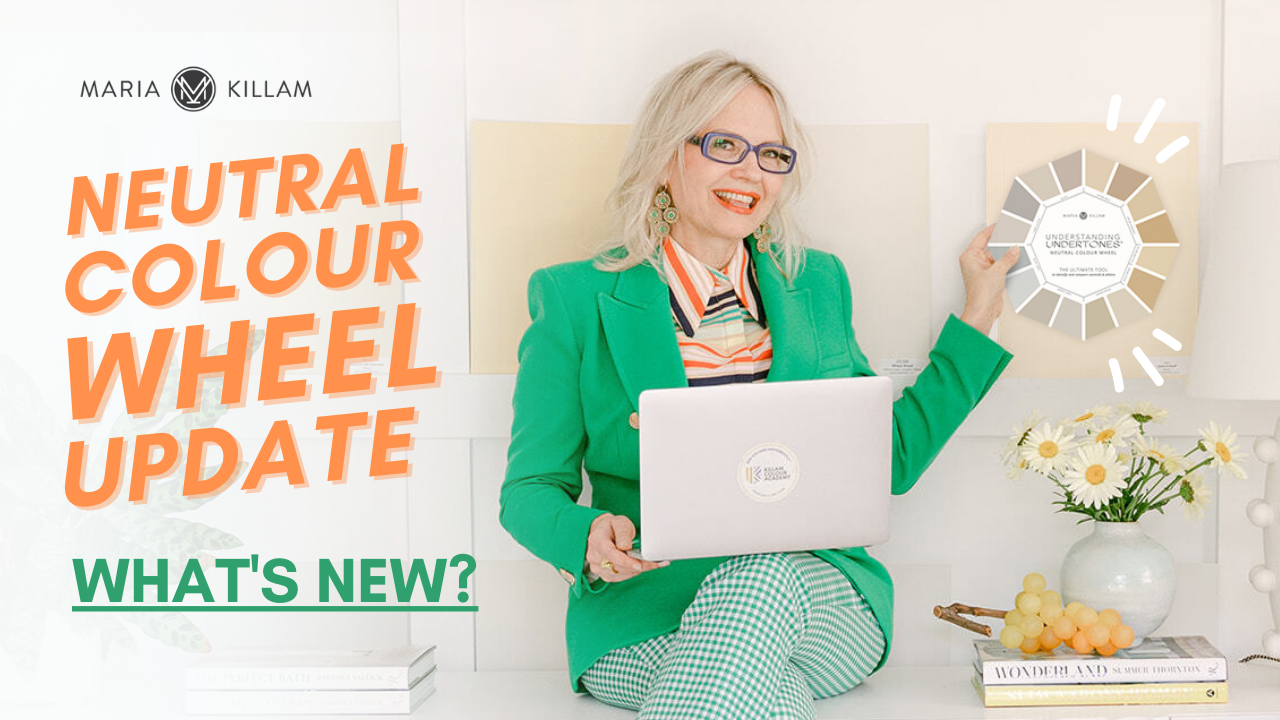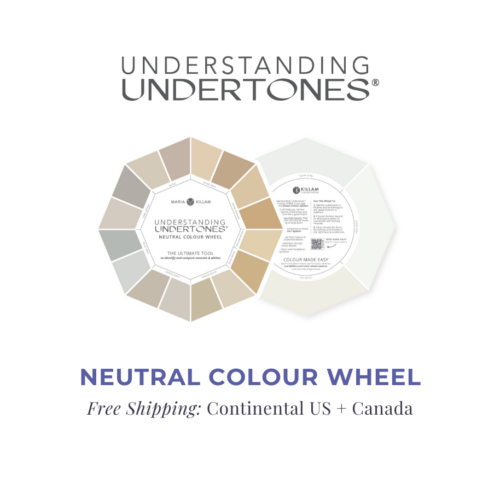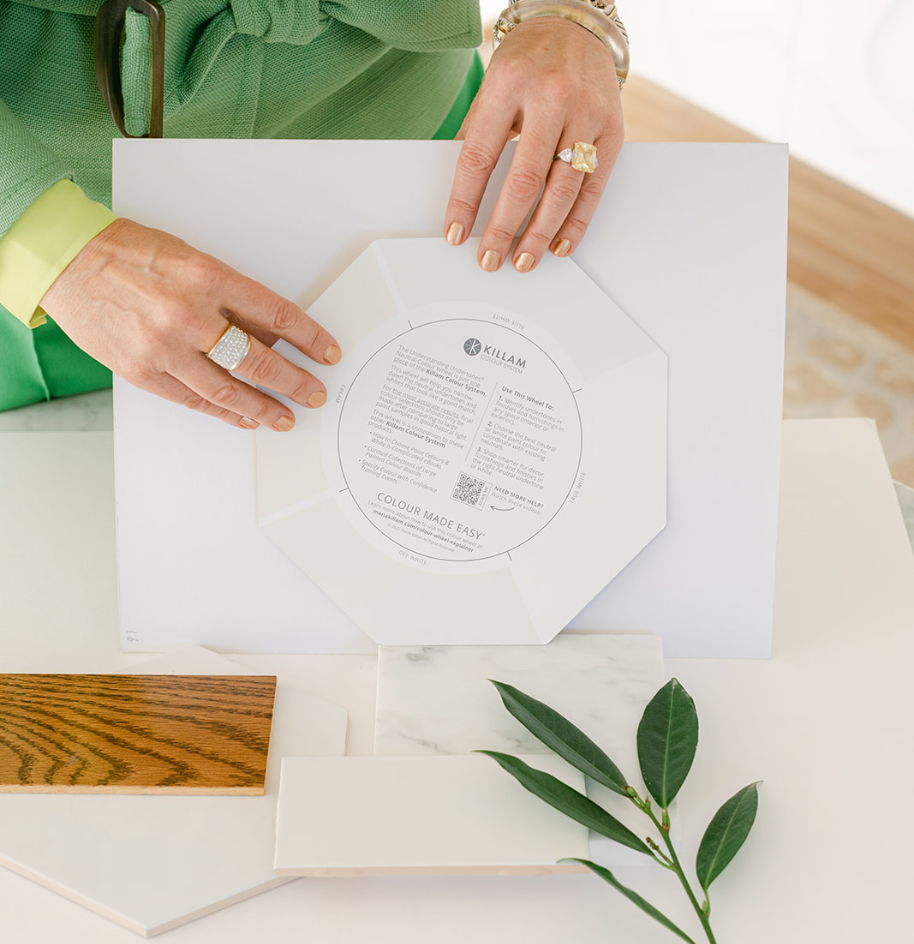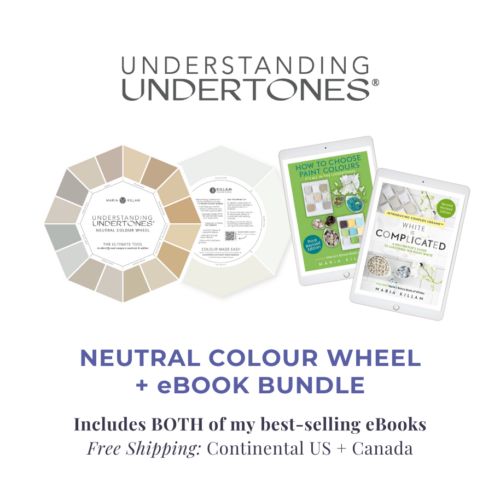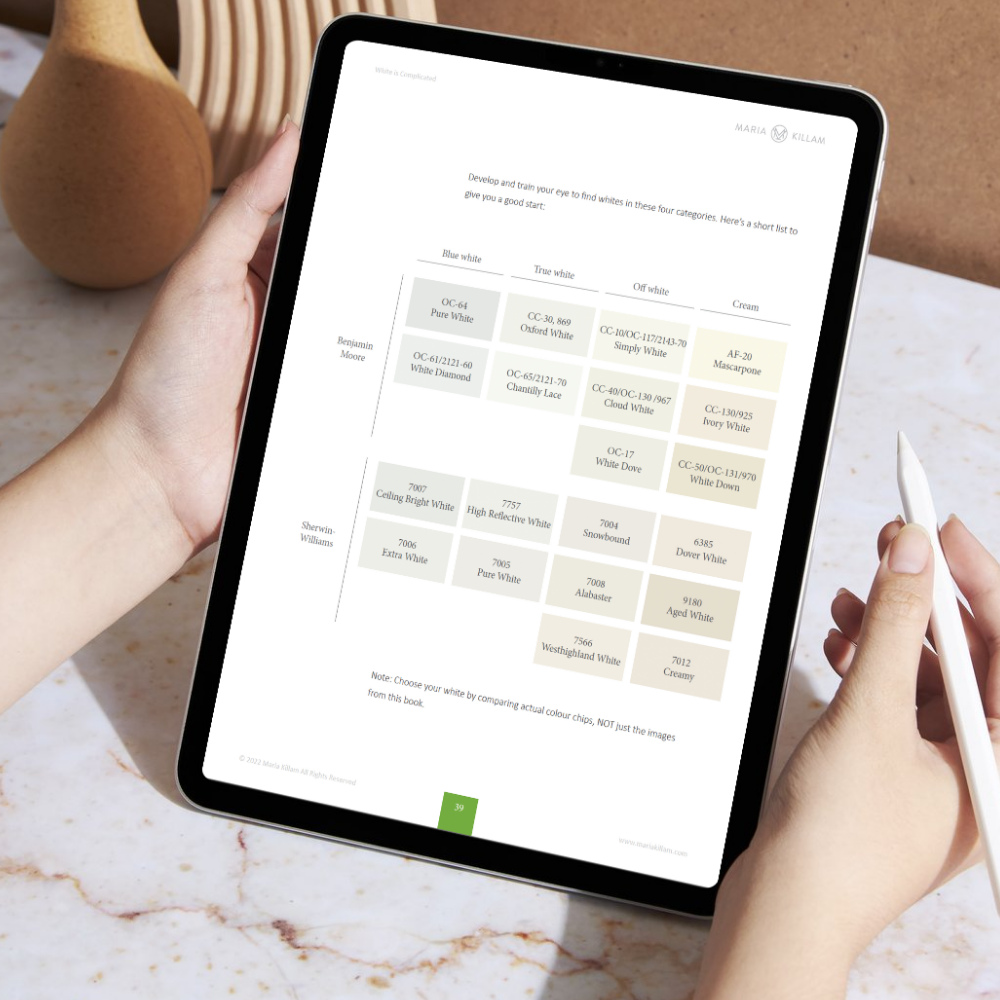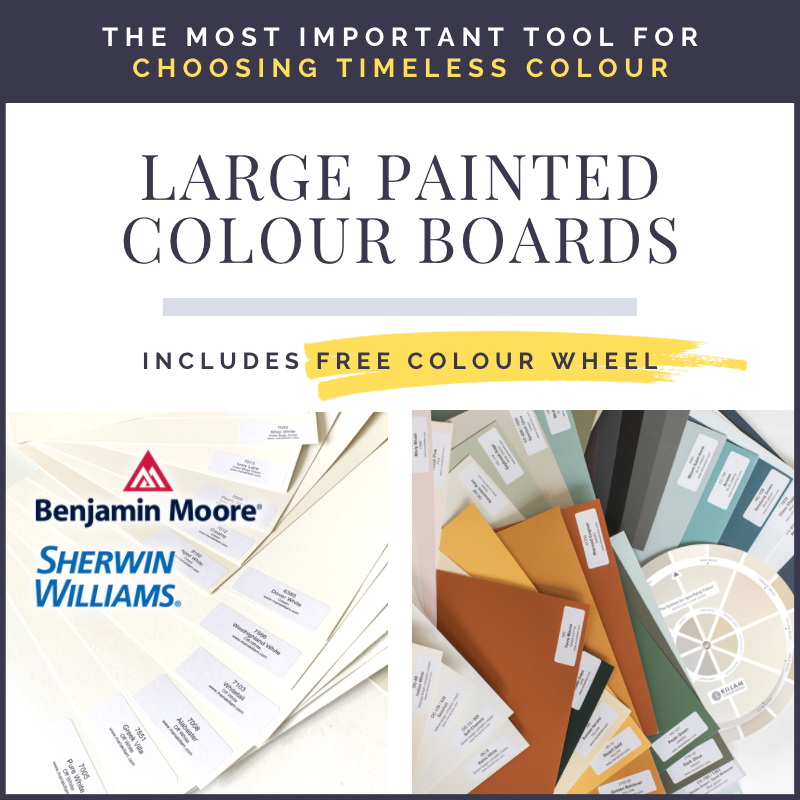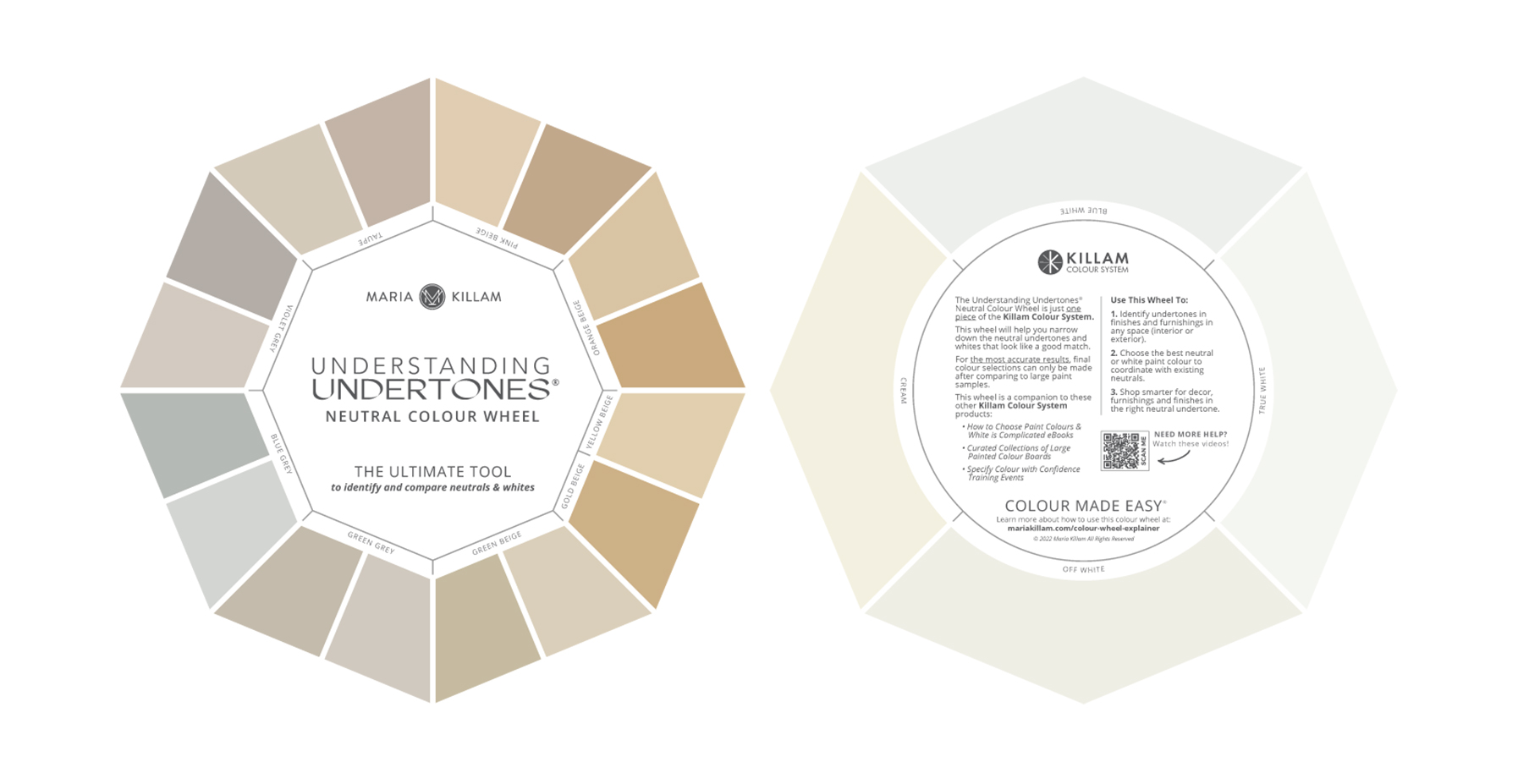
So, if you’re trying to eyeball the exact neutral you need, you are making an EXPENSIVE guess. Because let’s face it, neutrals and whites are the hardest to identify by themselves.
And when you get them wrong, whether it’s a paint colour or a hard finish, that’s when it becomes really, really obvious. #toolate
But now there’s an EASIER WAY to find the right beige, grey, taupe or white so you can make better decisions about neutrals.
The Understanding Undertones Neutral Colour Wheel Is the Ultimate Tool to Identify and Compare Neutrals and Whites.
For anyone who wants to save time, money and headaches when building, renovating, buying paint or choosing the right decor and finishes for any home.
Finally It's Here!
Stop wasting time trying to figure out which neutral undertone you need.
Instead pull out the ONLY tool with the 9 most useful neutral undertones of almost ANYTHING neutral.
Get a Colour Wheel at No Extra Charge!
The Colour Wheel is 100x MORE POWERFUL with the Large Painted Colour Boards.
(that’s why it’s included FREE with any colour board purchase)
The #1 Tool in the Killam Colour System
Make better choices whether you’re building a new house or updating a kitchen or bathroom.
Use this neutral colour wheel to see exactly which neutral undertones (or white gradations) you are working with.
So that you can design and decorate a beautifully coordinated room.
It doesn’t matter if you are building a new home or simply updating your existing kitchen or bathroom. When you need a neutral, this wheel is a GAMECHANGER.
Use this wheel to:
-
Identify undertones in finishes and furnishings in any space (interior or exterior).
-
Choose the best neutral or white paint colour to coordinate with existing neutrals and whites.
-
Shop smarter for decor, furnishings and finishes in the right neutral undertone.

The Ultimate Tool to Identify and Compare Neutrals & Whites
9 Neutral Undertones & 4 Gradations of White
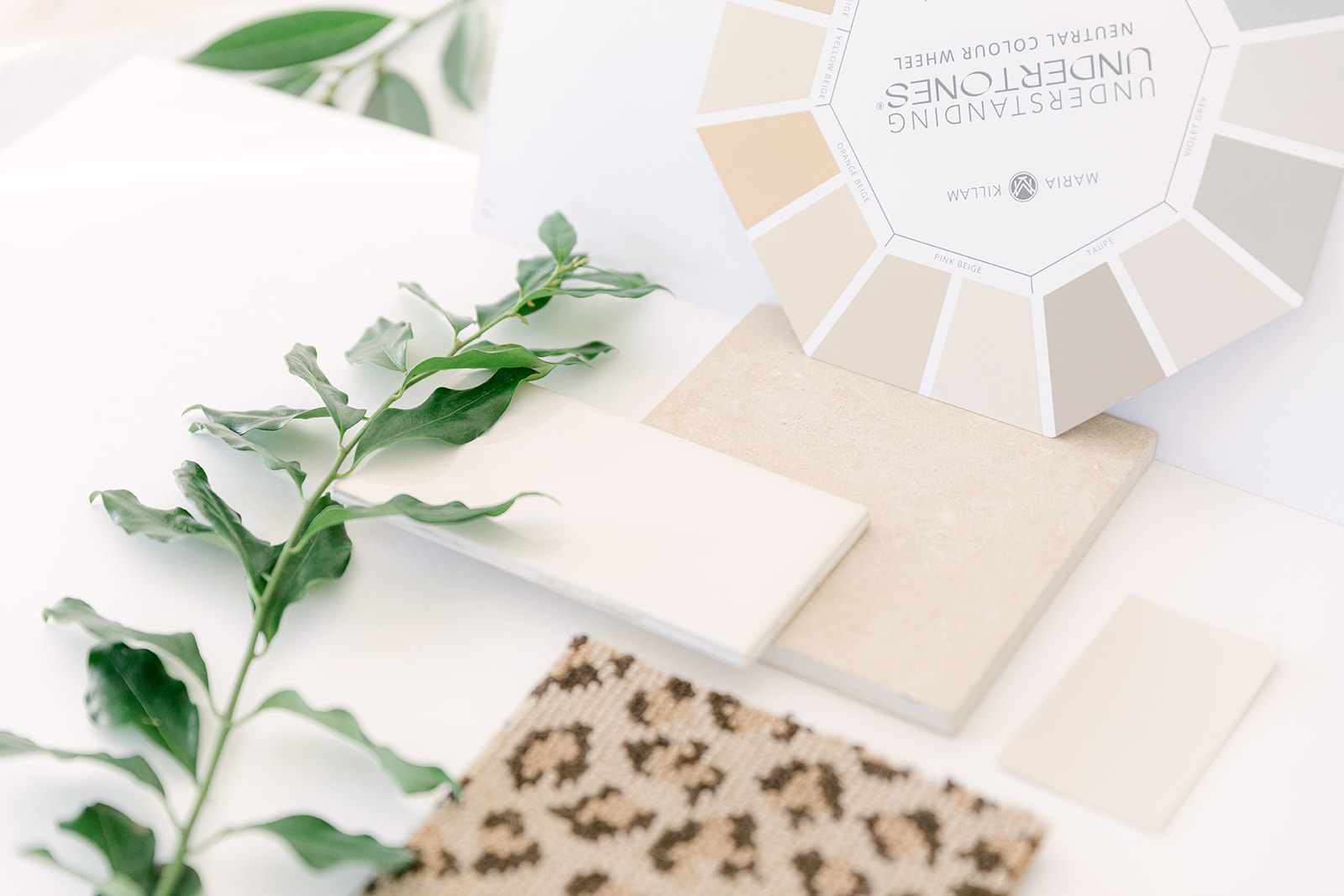
This wheel is the FIRST step in identifying the right neutral undertone you need.
Compare the 9 most useful neutral undertones to ANY neutral soft or hard finishes. Start by eliminating the undertones that don’t look close. Then, narrow in on the few that are most similar to the finish you are working with.
The next step involves comparing to large painted colour boards or paint samples curated from the Killam Colour System to confirm the exact undertone. Find the list of colours by undertone in either of the eBooks.

The 9 Most Useful Neutral Undertones
in the World
Pink Beige
Orange Beige
Yellow Beige
Gold Beige
Green Beige
Green Grey
Blue Grey
Violet Grey
Taupe
The 4 Most Useful Gradations of White
Blue White
True White
Off White
Cream
Get Your Colour Wheel Below
The Colour Wheel is 100x MORE POWERFUL with the Large Painted Colour Boards.
(that’s why it’s included FREE with any colour board purchase)

